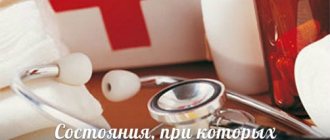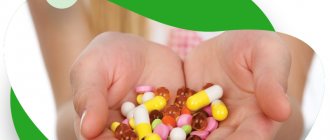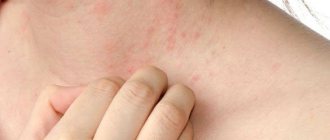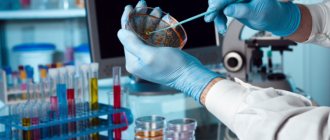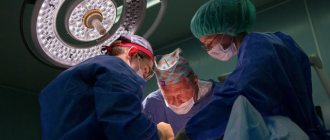Photo: M24.ru/Mikhail Sipko
“Man is mortal, but his main problem is that he is mortal suddenly,” these words, put into Woland’s mouth by Bulgakov, perfectly describe the feelings of most people. There is probably no person who is not afraid of death. But along with the big death, there is a small death - clinical. What is it, why do people who have experienced clinical death often see divine light, and is this not a delayed path to heaven - in the material M24.ru.
General information
Clinical death is a transition period between life and biological death of a person.
At its core, it is a reversible stage of death, when the activity of the heart and breathing stops, and no signs of vital activity are observed. Characteristic signs of this condition are the absence of pulse and consciousness, dilated pupils. An objective sign is small-wave atrial fibrillation or isoline on the ECG. However, in this condition, oxygen starvation does not lead to the development of irreversible changes in systems and organs. The ICD-10 code for this condition is G93 (Other brain lesions). Speaking about how long clinical death lasts, it should be noted that the duration of clinical death is no more than 3-4 minutes. The maximum time during which the body can remain in such a terminal state is 5-6 minutes. In rare cases, a longer duration was recorded.
How to identify such a condition and properly provide first aid will be discussed in this article.
Biological death: irreversible death of cells, tissues, organs
One of the first signs of biological death is the drying of the cornea. It is determined by squeezing the eye from the sides - the pupil then takes the shape of a spindle or “cat’s” eye. It is known to doctors as Beloglazov’s symptom.
Next, the patient begins to exhibit the following symptoms:
- the mucous membranes of the nose, mouth, and genitals dry out;
- body temperature gradually decreases;
- characteristic cadaveric spots appear on the skin;
- rigor mortis is noticeable.
Although decomposition processes begin almost immediately, some organs are less susceptible to it. Thus, the heart can be implanted 1-2 hours after removal from a dead body, and the kidneys and liver can be preserved for about 4 hours. Skin transplantation from a deceased person to a living person can be performed within the first 6 hours. Bone tissue is considered the most resistant - due to its inertness to external factors, it can be implanted into the recipient within 1-2 days.
Pathogenesis
After clinical death occurs, tissue metabolism slows down sharply, but due to anaerobic glycolysis it does not stop completely. When breathing stops and blood flow stops, destruction processes begin very quickly in the body. Due to oxygen starvation, tissues are destroyed. In this case, the cells of the cerebral cortex experience the greatest sensitivity. As a result, when brain cells die, even after successful resuscitation, complete recovery does not occur.
When blood flow stops in the body, active blood clotting occurs, and microthrombi appear in the vessels. Due to toxic products of tissue breakdown entering the blood, metabolic acidosis . With prolonged absence of blood circulation, biological death occurs. In the case of urgent resuscitation, cardiac activity is restored, after which postresuscitation disease as a consequence of ischemia , thrombosis of the capillary network, and significant homeostatic changes.
The duration of the period of clinical death is determined by the period during which the cerebral cortex and subcortex can maintain viability under hypoxic . For 3-5 minutes, the higher parts of the brain can remain viable in the absence of oxygen supply under conditions of normal body temperature. The practice of doctors in all countries of the world indicates that if the specified period is exceeded, then the person can return to life, but in this case the phenomenon of decortication (death of the cerebral cortex) or decerebration (all parts of the brain die) is already noted.
However, in medicine there is a second period of clinical death, which can last longer, after which resuscitation measures allow the person to be revived. This is achieved by the fact that the processes of degeneration of parts of the brain due to hypoxia are slowed down due to the creation of certain conditions. Thus, it is possible to increase the duration of clinical death in a state of hypothermia , that is, artificial cooling of the body. This can also be done by physical influences - hyperbaric oxygenation , head hypothermia . Special pharmacological drugs are also used to ensure a sharp decrease in metabolic processes.
In the absence of resuscitation processes or the failure of such actions, biological death occurs, and all physiological processes in the body cease.
What is sudden death
A special place in medicine is given to the concept of sudden death. It is defined as non-violent and occurring unexpectedly within 6 hours after the onset of the first acute symptoms.
This type of death includes cases of heart failure that occur without any apparent reason, which are caused by the occurrence of ventricular fibrillation (scattered and uncoordinated contraction of certain groups of muscle fibers) or (less often) acute weakening of heart contractions.
Signs of sudden clinical death are manifested by loss of consciousness, pale skin, cessation of breathing and pulsation in the carotid artery (by the way, it can be determined by placing four fingers on the patient’s neck between the Adam’s apple and the sternocleidomastoid muscle). Sometimes this condition is accompanied by short-term tonic convulsions.
In medicine, there are a number of other causes that can cause sudden death. These include electrical injuries, lightning, suffocation due to a foreign body entering the trachea, as well as drowning and freezing.
As a rule, in all these cases, a person’s life directly depends on the efficiency and correctness of resuscitation measures.
Causes
This condition can be caused by a variety of factors - illness, injury. All causes are divided into two groups – those associated with damage to the heart muscle ( cardiac ) and those not associated with it ( non-cardiac ).
Cardiac causes include primary disorders of myocardial contractility, provoked by acute coronary pathology or the influence of toxic substances. Among such causes are acute myocardial infarction , arrhythmias , electrolyte imbalance, rupture of aortic aneurysm, coronary artery disease, etc.
Non-cardiac causes include conditions that accompany the development of severe hypoxia. This can be suffocation, drowning , acute respiratory failure, electric shock, embolism , poisoning, airway obstruction, etc. There is a risk of fibrillation and subsequent cardiac arrest if potassium preparations, cardiac glycosides, antiarrhythmics, barbiturates are administered incorrectly.
Symptoms
The main signs of clinical death of a person are as follows:
- Lack of breathing.
- Lack of effective heart contractions.
- Lack of consciousness.
If these symptoms are present at the same time, this is a clear sign of such a condition.
If the heartbeat or consciousness persists, clinical death is not diagnosed. Within 30 seconds after the blood flow stops, spontaneous residual breathing is possible. Individual myocardial contractions and, accordingly, weak pulse impulses may also be observed. As a rule, no more than 2-5 such shocks are detected.
Speaking about secondary signs of this condition, the following symptoms should be noted:
- Lack of muscle tone, movements, reflexes.
- Unnatural body position.
- Pale sallow skin.
- Inability to determine blood pressure .
- Pupil dilation up to 5 mm without reaction to light (observed after 90 seconds).
- Pointed facial features (the so-called Hippocratic mask).
Speaking about how clinical death differs from biological death, it should be noted that in case of clinical death there is the possibility of resuscitation.
Upon initial superficial examination, signs of clinical and biological death may be similar. However, the definition indicates that biological death is the irreversible cessation of all physiological processes, in contrast to clinical death.
Resuscitation of a patient in a clinical setting
Resuscitation of a victim in a hospital setting is carried out according to a certain system. It consists of the following methods:
- Electrical defibrillation - stimulation of breathing by exposure to electrodes with alternating current.
- Medical resuscitation through intravenous or endotracheal administration of solutions (Adrenaline, Atropine, Naloxone).
- Circulatory support by administering Gecodez through a central venous catheter.
- Correction of acid-base balance intravenously (Sorbilact, Xylate).
- Restoration of capillary circulation by drip (Reosorbilact).
If resuscitation measures are successful, the patient is transferred to the intensive care unit, where further treatment and monitoring of the condition is carried out. Resuscitation is stopped in the following cases:
- Ineffective resuscitation measures within 30 minutes.
- Statement of the state of biological death of a person due to brain death.
Article on the topic: Circle of Willis - an important system of vascular bridges
Tests and diagnostics
Speaking about how this condition is diagnosed, first of all, it should be noted that diagnosis and treatment are carried out in parallel. After all, the less time passes between the establishment of such a fact and the start of resuscitation, the greater the likelihood that the person will live a full life subsequently.
This condition is determined by the symptoms described above. But if this happens in a medical institution, additional diagnostic methods are used. They are important in determining how effective methods of resuscitating a patient are. Also, physical and instrumental methods make it possible to assess the degree of hypoxia and acid-base imbalance. During the diagnostic process, measures are simultaneously taken to restore the heart rhythm.
The following types of research can be practiced:
- Physical methods . The examination makes it possible to detect characteristic symptoms. During auscultation, no coronary sounds are heard and there are no breath sounds in the lungs. Visually assess the presence of respiratory movements of the chest. Blood pressure is not determined.
- Instrumental methods . Electrocardiography is performed. It should be taken into account that the isoline corresponding to complete cardiac arrest is not determined in every case. Sometimes there is a random contraction of individual fibers, but there is no blood flow. There are no clear ventricular complexes.
- Laboratory methods . They are used if resuscitation is successful. Biochemical parameters, electrolyte balance, etc. are examined. Metabolic acidosis , high levels of potassium, sodium, proteins, and breakdown products are determined in the blood. Hypocoagulation and decreased concentrations of platelets and coagulation factors are noted.
First aid for clinical death
Basic resuscitation measures are carried out, as a rule, outside medical institutions. First aid usually begins with the patient being laid on a flat and hard surface, a cushion is placed under his shoulders and his head is tilted back. Next, you need to wrap your fingers in a cloth and clear the patient’s airways of vomit, mucus, and remove the dentures.
The main methods of reviving the body in case of clinical death outside a medical institution are indirect cardiac massage, which must be combined with mouth-to-mouth artificial respiration. It is important that compressions and inhalations have a ratio of 15:2. The massage should be carried out at a speed of 100-120 thrusts per minute. It is important that these methods of revival are carried out according to the rules.
If the pulse has been restored, the patient is placed on his side and his condition is carefully monitored until emergency assistance arrives. It is important to take into account that after recovery from clinical death, this condition may recur.
In the conditions of medical institutions or ambulances, basic measures are also urgently carried out when recovering from clinical death. To ensure lung excursion, the doctor performs intubation and connects the person to a ventilator. A laryngeal or face mask for non-invasive ventilation or an Ambu bag can also be used.
Indirect cardiac massage is performed both manually and with a cardio pump, which provides a more effective procedure.
If there is obstruction of the respiratory tract, a conicotomy or tracheostomy and installation of a hollow tube are performed.
In case of fibrillation, a defibrillator is used.
The medications described in the section above are also administered.
Resuscitation measures are considered effective if the following results are present:
- Sinus rhythm is restored.
- Blood pressure readings are 70 mm Hg. Art. and higher.
- The heart rate is 60-110 beats.
- The pupils narrow and their reaction to light is restored.
- Skin color is normalized.
However, immediately after resuscitation, spontaneous breathing or immediate return of consciousness are rarely observed.
Characteristic symptoms
Before you begin providing emergency care for cardiac arrest, you need to make sure that the victim is truly in a state of clinical death.
An untrained rescuer has only 10-15 seconds for diagnostic measures. Act according to the “SOS” rule: listen, touch, see. Symptoms of cardiac arrest are divided into primary and secondary.
Primary signs are pronounced indicators indicating the absence of signs of life:
- Loss of consciousness by the victim. The person does not respond to someone addressing him or patting him on the cheeks.
- There is no pulse in large vessels. It is best to check the pulse on the carotid artery. You can find it by placing your fingers on the hole near the Adam's apple.
- The person's breath cannot be felt. Lean as close to the victim as possible, placing your cheek against their mouth. The absence of even barely audible vibrations or sounds will prove its absence.
- The pupils appear dilated and do not respond to light. This reaction is checked using artificial light: you need to shine a flashlight into your eyes. If, after exposure to light, the pupils do not react, it means that the person needs resuscitation assistance.
The guesses will be confirmed by secondary signs of clinical death, which are manifested by the following symptoms:
- Severe pallor of the skin;
- Before loss of consciousness, convulsive muscle contractions are possible;
- Lack of muscle tone;
- Loss of all reflexes.
The cessation of cardiac activity causes a disruption in all functional capabilities of the body. Therefore, the first action that needs to be taken in case of cardiac arrest is to call a team of qualified doctors. Then immediately begin rescue actions, which include cardiopulmonary resuscitation.
Consequences and complications
Speaking about what clinical death means for the body, it should be taken into account that such a condition leads to serious consequences. Even with successful resuscitation, experiencing clinical death means a very serious shock for a person, primarily in physiological terms.
The consequences of clinical death primarily depend on how long this condition lasted.
The most severe consequences are the transition to biological death, which finally occurs 10-12 minutes after the heart stops.
But even if it was possible to bring a person back to life, the consequences of clinical death for the body can still be fatal. If this condition continues for too long, brain death or partial disruption of its functions occurs. encephalopathy may appear .
After the experience, patients develop post-resuscitation illness, which often leads to endotoxicosis, multiple organ failure, and secondary asystole.
In general, the likelihood of complications increases in proportion to the period for which vital functions were suspended.
In addition, people who have experienced clinical death also experience certain psychological changes. Very often their life values, attitudes towards many things, and emotional attitudes change.
Near Death Experiences
In the 1970s, American doctor and psychologist Raymond Moody conducted a study that showed that most people who have experienced clinical death experience similar sensations. Moody listed them as follows:
- Sounds similar to buzzing and humming are heard.
- A feeling of peace arises, pain recedes.
- There is a feeling of detachment, there is a phenomenon of leaving one’s own body.
- There is a journey through a tunnel.
- There is a feeling of flying, soaring in the skies.
- Seeing other people. Often these are deceased relatives.
- There is a meeting with a spiritual being from whom a bright light emanates.
- Pictures of a past life are seen.
- I don't want to go back to life.
Most often, those resuscitated experience from two to six of the listed sensations.
